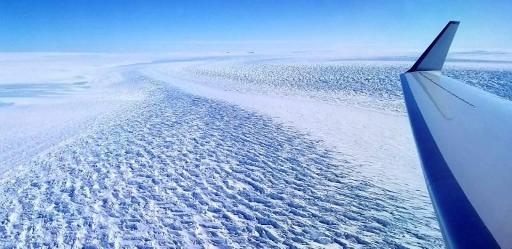Global warming threatens over half of the ice shelves supporting Antartica’s glaciers, a study published in Nature magazine notes, amid increased warnings of accelerated ice melt in polar zones.
Using artificial intelligence systems to analyse satellite data, the researchers mapped fractures on the surfaces of the floating ice shelves around Antartica, which act as pillars, contributing to the stability of the main ice sheet that rests on land.
The researchers then calculated the fragility of the fractures to the incursion of water coming from the melting of ice upstream and concluded that 50% to 70% of them could split. Water is denser and thus heavier than ice, at equal volumes, and exerts various types of pressure on it.
When an ice shelf collapses, the glaciers it helps to retain can, in turn, be submerged in the ocean, dangerously increasing sea levels.
Most ice shelves are stable and frozen all year round, but this type of phenomenon has already been observed. Parts of the Larsen shelf, at the tip of the Antarctic peninsula, disintegrated in this way in 1995 and 2002.
The authors of the study noted that predictions regarding the melting of Antarctic ice suggest that the resulting accumulation of water could spread to many vulnerable zones in future global warming scenarios.
They note, in particular, that Pine and Thwaites Island glaciers in the west of Antarctica have a combined area greater than that of Germany.
The warming of the ocean temperature also weakens the ice shelves from underneath.
"The ice shelves – that’s the weak spot, where the atmosphere, the ice and ocean interact,” noted the study’s co-author, Jonathan Kingslake, a glaciologist at Columbia University in the United States. “If they fill up with meltwater, things can happen very quickly after that, and there could be major consequences for sea levels.”
A team of British researchers also found, in a pre-published study – therefore not yet reviewed and approved by other specialists – that the Earth lost 28,000 gigatonnes (billions of tonnes) of ice between 1994 and 2017. This is less than 0.1% of the world’s ice, but enough to increase global sea levels by 35 mm.
According to climate experts at the UN Intergovernmental Panel on Climate Change (IPCC), sea levels increased by 15 cm in the 20th Century. As a result, by 2050 over a billion persons will be living in coastal areas particularly vulnerable to floods or extreme weather events.
The Brussels Times

